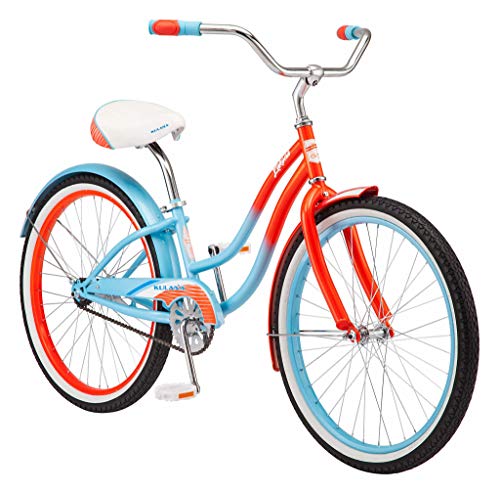Some general thoughts/facts:
Schwinns ran 13/16" posts; other mARques ran the same, or 7/8", or 5/8"... it's always best to keep the original post if you have it, and measure it precisely if you intend to replace it. Older bikes had 5/8" tops for the seatguts, later bikes had 7/8"... another consideration, but easy.
Most all the old US bikes had 1"x24tpi headsets; some foreign makes (eg Raleigh) ran different threads (eg, 26tpi). Most framemakers had slightly different headtube specs where the cups press into the frame, bUt virtually all old-timey US
bikes ran 1" headsets that are wider at the cups than the modern/euro 1" headcups. Best to save original cups; running different headsets with the stock cups could result in weirdness if the cups and cones were milled for different retainers; running loose balls of the appropriate size will typically fix all of that. If you don't have the original cups, a Wald 4080 ($6 brandnew headset) will fit almost any old US frame/fork.
1 piece crank BBs will all fit all frames with a US BB shell, but the cranks themselves will either be 28tpi (Schwinn) or 24tpi (everyone else.) The 24tpi cranks run different ball retainers than the Schwinn ones, and the cups are milled slightly different as a result, so you'll want to run a BB set (cups'n all) that completely matches whichever crank. But, you can run a Schwinn crank/BB set in a non-Schwinn frame, and you can run a 24tpi crank/BB set in a Schwinn. In fact, you'll wanna check a bike's existing crank/bb/ cups b/c it is very likely to hAVE been changed at some point. Just be sure your intended crank and bb match each other....
Forks: the steerer tube length needs to roughly match the frame's headtube length, plus a little more for the "Stack height" that comes into play from the bearings, cups, and hardware of the headset. Most/many 26" postwar men's models are close enough to make it work with spacers or by running slightly less threads up on the topnut than you normally want. Ladies' frames and other size frames will likely be too far off to work without modification. But, generally, they will have the correct thread pitch.
Most frames will need a seat collar that's about 1" at the ID. I've had weird situations where a 1" collar that should work with a Chicago Schwinn fit the frame, but didn't tighten down right. So, easiest thing is to use a Schwinn collar, but most 1"ers will work fine. Some old frames had no collar, and used an expanding wedge, like a stem does. Hold onto posts with expanders.
Stems: very old bikes ran 7/8" (22.2mm) quill stems; sometime in the late 50s/early 60s, they switched to 21.1mm quills on many bikes, and sometime after that, the 21.1 came on cheaper bikes, and 22.2mm came on better bikes.
French bikes were 22.0mm; some Brit bikes had smaller diameter quills, but these were mostly shopping bikes/folders. 21.1 forks wont take a 22.2 quill without modification to one or both parts. 22.2 forks will take a 21.1 quill and can be tightened down sufficiently, but there'll be a gap up top. Shims can be used in that case.
Hubs: most old US bikes are spaced 110mm at the rear, and at 120mm if they came from the factory with derailer gears. Old forks will be spaced @90mm; newer forks/hubs are spaced at 100. Both forks and frames can be respaced within reason, but spreading forks has always made me nervous. Obviously, lots of ppl do it, but the lack of triangulation, combined with forcing the steel out 10mm, gives me the jitters.
The above are generalizations. There are exceptions, and by 2014, many old frames/parts have been modified by previous owners, so always measure stuff before you hunt for parts or try anything extreme.
HTH
-Rob
































































